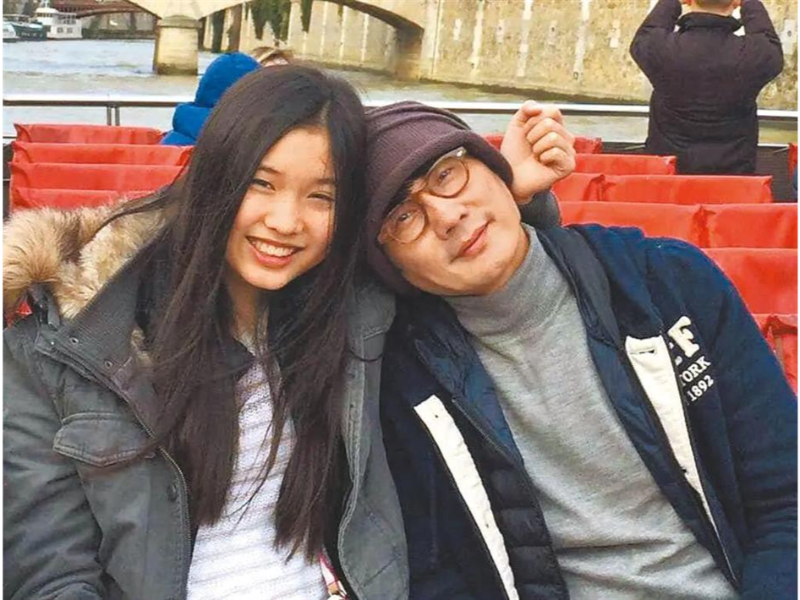- Renowned musician Tino Bao uses AI to recreate his deceased daughter, sparking significant online debate.
- Bao’s efforts to “resurrect” his child through AI prompted reflection on posthumous rights, grief, and corporate responsibility amid technological advancements.
- Questions arise about the consent of the deceased to be digitally recreated and the ethical implications of maintaining such digital replicas.
A renowned musician’s journey to resurrect his daughter via AI has triggered worldwide debate on the ethics of digital immortality, consent, and coping with grieving process in the modern era. This poignant tale delves into the complexities of technology’s role in preserving memories and blurring the lines between the living and the deceased.
A father’s quest: Reviving his daughter through AI
Renowned Taiwan musician Tino Bao, also known as Bao Xiaobo, stirred significant online debate following his use of AI to recreate his deceased daughter.
In a recent interview, Bao shared, “My daughter has returned,” unveiling his efforts to “resurrect” his child using AI technology.
The backstory is profoundly moving: Bao’s daughter, Bao Rong, succumbed to a rare blood ailment despite her father’s desperate attempts to save her through bone marrow donations in December 2021.
Bao’s recent endeavour involved employing AI to recreate his daughter’s presence, notably having her sing a birthday song for his wife. Shared on Facebook on January 19, a video clip featured an AI-generated Bao Rong conveying heartfelt messages and singing to her mother.
In the interview, Bao disclosed his journey of repeated attempts to develop a “digital daughter” capable of real-time interaction. As his wife’s birthday approached, the family united to sing a birthday melody, led by the AI rendition of Bao Rong.

Bao, now sporting long white hair – a departure from his previous appearance, revealed that he ceased cutting his hair post his daughter’s death. His decision stemmed from a desire to preserve a section of hair that once touched his daughter’s forehead daily.
Struggling to cope with his loss, Bao embarked on a path into AI technology, pursuing a doctoral degree in the field since 2022. His objective: to recreate his daughter’s pre-illness voice.
Expressing his determination to present his daughter in the most ideal form within the digital realm, Bao stated, “I want to give her the most perfect image, the most perfect voice, and let her continue to exist in the magnificent digital world.”
Despite awareness that the AI creation isn’t tangible, Bao asserted that his profound yearning for his daughter superseded concerns of authenticity.
Upon hearing Bao’s narrative, some netizens likened it to themes explored in “The Wandering Earth 2,” where a scientist Tu Hengyu played by Andy Lau talks with his deceased daughter after he uploads her personality into an experimental AI program.
Bao’s unwavering commitment to immortalize his daughter’s memory resonated deeply with many, sparking widespread discussion on platforms like Sina Weibo, where the topic trended with over 16 million views at the time of reporting.
While many expressed support for leveraging AI to preserve memories and emotions, others pointed out that utilizing GenAI to resurrect late individuals poses a burden on the living.
Also read: Apple in talks to let Google’s Gemini power iPhone AI features
Also read: Apple working on a contextual AI language model called ReALM
Digital afterlife dilemma: The ethical and practical challenges
1. Significant human cost
While advancements in AI, such as ChatGPT, offer the possibility of creating convincing chatbots resembling deceased individuals, the human toll of maintaining such digital replicas is considerable.
The upkeep of automated systems, including AI-generated replicas of the dead, demands significant labour. This labour is often performed by overworked and underpaid annotators and content moderators. Managing a deceased individual’s digital presence involves tasks like handling passwords, maintaining digital estates, and managing smart home devices. Such digital death care practices require ongoing effort to ensure the preservation and accessibility of digital heirlooms.
Also read: OpenAI worried its new voice tool will be used for scams
2. Technological decay: The rise and fall of AI-based replicas
However, despite these efforts, technological systems inevitably decay over time. Just as humans are mortal, digital platforms, devices, and websites face obsolescence. Maintaining the digital legacies of deceased loved ones requires continuous updates and adaptations to evolving technologies.
Initial attempts to develop AI-based replicas of deceased individuals certainly underscore this point.
For instance, Intellitar’s Virtual Eternity, established in Scottsdale, Arizona in 2008, aimed to simulate human personalities using images and speech patterns, potentially serving as stand-ins during business meetings or providing comfort to grieving loved ones. Despite being dubbed by a CNET reviewer as the product “most likely to make children cry,” the company folded in 2012, with its website subsequently disappearing.
Meanwhile, LifeNaut, a project backed by the transhumanist organization Terasem, aspires to combine genetic and biometric data with personal information to replicate a complete human once technology allows. However, the reliance on outdated Flash software on the project’s website suggests that achieving true digital immortality is likely a distant prospect, requiring ongoing updates along the way.
Also read: How biometric profiling means we all see things slightly differently online
Also read: Smart wearables: Can data tracking really boost health?
3. Environmental concerns and financial challenges in the era of GenAI
Furthermore, the environmental and financial costs of deploying generative AI for resurrecting the dead are substantial. The resources required, including raw materials, water, and energy, raise concerns, particularly in the context of climate change.
Moreover, the substantial operational costs of AI models like ChatGPT present significant financial challenges. These models demand extensive computational resources for training and maintenance, impacting scalability and affordability for businesses.
Also read: Carbon trading explained: Top 4 carbon emission exchanges in 2024
4. Balancing consent, grief, and corporate responsibility
The ethical implications of creating AI replicas of the dead also raise questions about consent and control. Determining who should have the authority to create such replicas—whether it be family members, employers, or companies—remains unresolved.
Instances like Joshua Barbeau’s creation of his deceased fiancée Jessica using OpenAI’s GPT highlight the potential for these replicas to complicate grieving processes and interpersonal relationships. It may blur the lines between reality and simulation, making it harder for people to come to terms with their loss and move forward.
Using AI to create an avatar for personal or commercial use should be considered carefully, given the potential impact on a person who is grieving that loss. Moving through grief is a process of adapting and integrating loss into our lives and helps us make sense of the immense changes that the death of someone significant to us can bring.
Grief, Loss and Bereavement Therapist and Educator Elizabeth Schandelmeier
According to Schandelmeier, adopting AI to generate an avatar, whether for personal or commercial purposes, warrants careful consideration due to its potential effect on individuals grieving the loss of a loved one. Navigating grief involves a journey of adjustment and acceptance, aiding in comprehending the profound transformations that accompany the passing of someone significant in our lives.
Yes, Jessica is NOT here anymore.
This was also not the way that Jessica’s other loved ones wanted to remember her; family members opted not to interact with the chatbot.
Ultimately, the responsibility for maintaining AI replicas of the dead falls on developers and companies. Decisions regarding the lifespan of such replicas, including intentional decay to save operating costs, are made by these entities. Barbeau needed to be careful with his time spent with Jessica, choosing to cease his interactions with the chatbot before its battery depleted significantly. This way, he could avoid directly facing yet another manifestation of mortality.
5. Posthumous rights and bereaved relatives
In certain scenarios, developers may envision chatbots as enduring entities that could potentially substitute living workers entirely. The recent SAG-AFTRA (Screen Actors Guild‐American Federation of Television and Radio Artists) strike has prompted discussions regarding the posthumous rights of individuals, with generative AI technology possibly being utilised to resurrect deceased actors. Similar dilemmas have arisen with various deepfake versions of late celebrities, such as the contentious use of Anthony Bourdain’s manipulated voice in a documentary or a professor’s recorded lectures enabling posthumous university work.
These recreations, besides potentially disadvantaging living employees, might distress the bereaved relatives of the deceased and introduce new bureaucratic challenges as they seek authority over these digital replicas. AI replicas of individuals could be generated without the knowledge or consent of their living relatives.
Pop quiz
What are the concerns surrounding AI-based afterlife?
A. Huge human cost
B. Technological decay
C. Environmental concerns
D. Financial challenges
E. Consent, grief, and control issues
F. Posthumous rights and bereaved relatives
Reviving late people through AI underscores the concerns regarding consent, labor, and environmental impact. The digital afterlife dilemma prompts reflection on posthumous rights, grief, and corporate responsibility amid technological advancements. While we can craft remarkably realistic replicas of the deceased, sustaining these entities necessitates ongoing support from the living: Managing digital legacies involves expenses like domain maintenance, spam filtering, correspondence with inactive accounts, format updates, and data transfers amid disappearing platforms. For those left responsible for perpetuating these creations, the enduring psychological toll may prove overwhelming.
Do the deceased give their consent willingly to be trapped in the screen?
Answer to the quiz: All of them.

